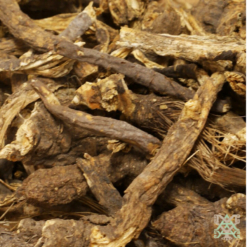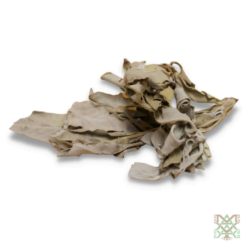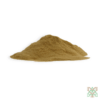Mulungu (Erythrina mulungu) – Powdered Bark from Brazil
Desde € 7,26 Incl. VAT
Botanical name: Erythrina mulungu
Common name: Mulungu
Plant part: Bark
Form: Powder
Country: Brazil
Beschreibung
More about Mulungu (Erythrina mulungu)
Mulungu is a tree native to South America, belonging to the Fabaceae (pea) family. Its botanical name is Erythrina mulungu. Mulungu has been used for centuries in traditional medicine due to its sedative and anxiolytic properties. It is believed to help relieve anxiety, stress, and promote restful sleep.
Mulungu is a word of Tupi origin (derived from mussungu) and means “tambourine” (a type of hand frame drum popular in Brazil.) This name comes from the sound emitted by the beating on its hollow trunk. It is a medium-sized, well-branched tree that grows to 10-14 m tall. It produces a profusion of pretty, reddish flowers (pollinated by hummingbirds) at the ends of the tree’s many branches. The tree is sometimes called “coral flower” since the flowers resemble the color of orange coral. Indigenous people use the large red and black seeds to make necklaces and jewellery.
Tribes in the Amazon of Brazil and Peru have long been using Mulungu as a natural sedative. In Brazil it grows all over the country, from the Central states to the plains of the North East where it grows abundantly and they harvest most of the commercially sold bark. It is a wonderful medicinal plant from South America that is little known, yet has already been the subject of extensive research. More and more people are using it to calm an overly agitated nervous system and promote restful sleep.
Cautions: It may lower blood pressure and may cause drowsiness. Do not use when driving or operating machinery.

Botanical description
The tree can grow up to 15 meters tall and has a dense crown of leaves. It has a straight trunk with a diameter of up to 60 centimeters. The leaves are large, up to 30 centimeters long, and are divided into three leaflets. The flowers are red and grow in clusters. The fruit is a pod containing several seeds.
Mulungu is widely distributed throughout South America, especially in Brazil. It grows in the Amazon rainforest and other tropical areas, typically near rivers and streams.
The tree’s bark, leaves, and flowers are used in traditional medicine to make teas, tinctures, and capsules. The active compounds in mulungu are believed to be alkaloids and flavonoids, which have sedative and anxiolytic properties. Mulungu is also used to treat hypertension, convulsions, and insomnia.
Dream Herb
Mulungu is said to help with sleep disorders and also to help improve dreaming. It is seen as a dream herb for this reason. It brings calm and focus to ones dreams.
Reviews (0)
Only logged in customers who have purchased this product may leave a review.
Legality
Disclaimer
Related products
Scientific Name
Dream Herbs
Snuff Box (Entada Rheedii) – Giant Sea Bean or African Dream Herb Whole Seed from Thailand


















Reviews
There are no reviews yet.